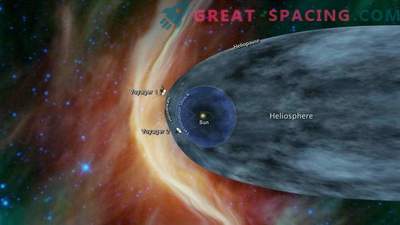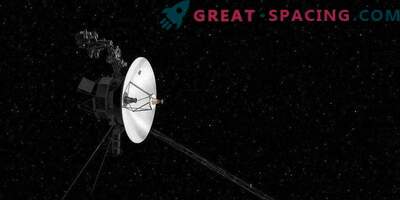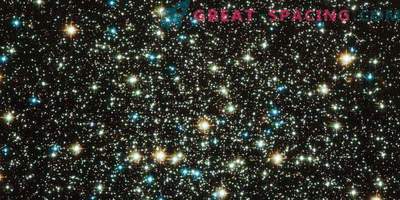
Space seems to us to be something empty, but you can always find the remnants of star explosions that manifest themselves in magnetic forces. Voyager is an important mission that helps to calculate the limits of our stellar margin - the heliosphere.
The heliosphere is created by a stable flow of magnetic material, represented in the form of the solar wind. It is endowed with high acceleration and creates a giant bubble with a width of 20 billion miles. Inside this space, all objects are subject to solar exposure.
Study of the interstellar courtyard
Scientists have obtained the long range of our system, and in 2012 Voyager entered the interstellar space. This is where the solar system ends.
Accelerating to 35,000 miles per hour, vehicles travel 900,000 miles every day. 5 years ago, Voyager-1 crossed the edge of the heliosphere (heliopause) and entered the space between the stars. This is the first device that managed to do this. The data show that inside the heliosphere the Earth and other objects are protected from cosmic rays, hot hydrogen spots and helium gases that make up “Local Fluff” - massive cloud cover. We can say that we are in a bubble passing through the flashes of supernovae and other events.
Study of spatial nature
After the vehicles left the outer planets, turn off their tools. But there are those devices that study the spatial characteristics. So there are 4 instruments that measure magnetic fields, charged energy particles and low-frequency radio waves.
The trajectory of the Voyager-1 spacecraft is shown here. The launch took place on September 5, 1977. He was one of the first vehicles who managed to reach the outer planets and the interstellar medium
Voyagers continue to send us information. NASA's Deep Space Network is responsible for receiving, tracking signals for 16 hours. Voyager 1 is 13 billion miles distant and passes through interstellar space, and Voyager 2 has already covered 11 billion miles and will enter it in a few years. They are located at different points in space, which makes it possible to better analyze the volume of the system.
Final Frontier
It was possible to determine the heliospheric edge only with Voyager-1, so I had to wait as much as 4 decades! But this is an amazing mission that continues to shock its discoveries. Recently, the device hinted that the magnetic field of the interstellar medium is wrapped around the heliosphere.
Voyager-2 trajectory, launched on August 20, 1977
Communication with the devices will be maintained as long as nuclear sources create an energy reserve. It is expected that the transport of information will cease in 2025. But the technique will continue its movement. If they do not collide with other objects, they will complete the orbital path around the galactic center in 225 million years.











































